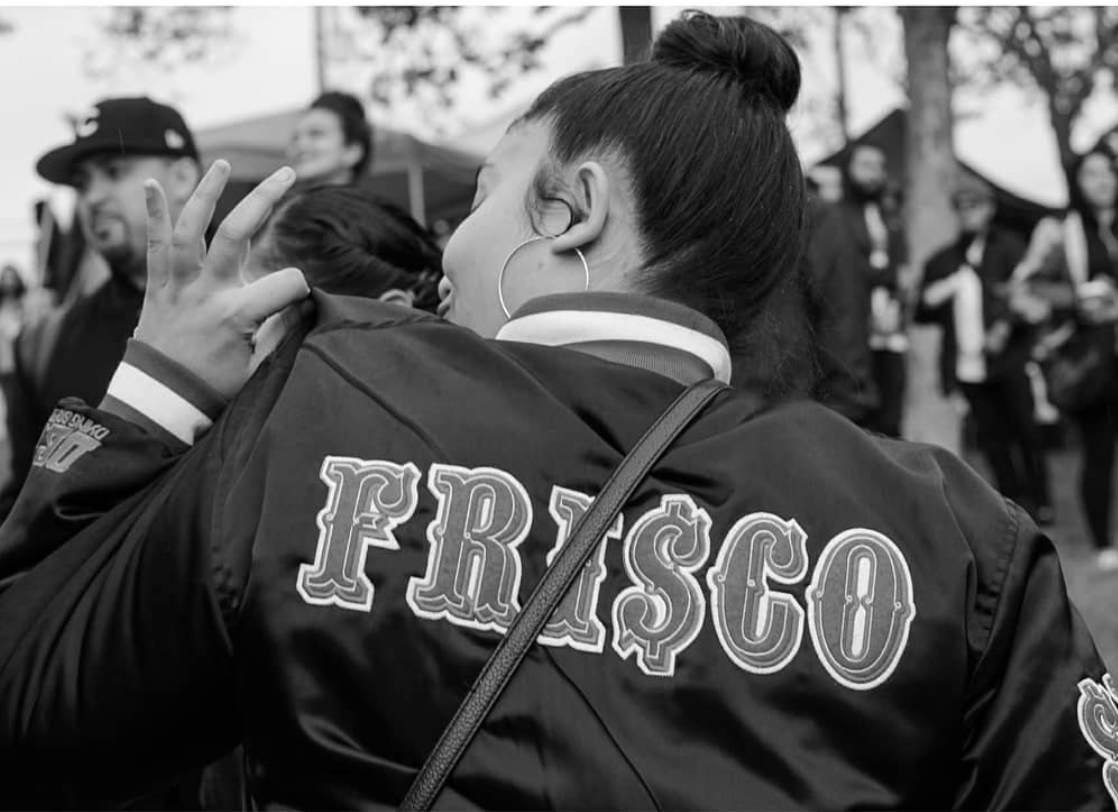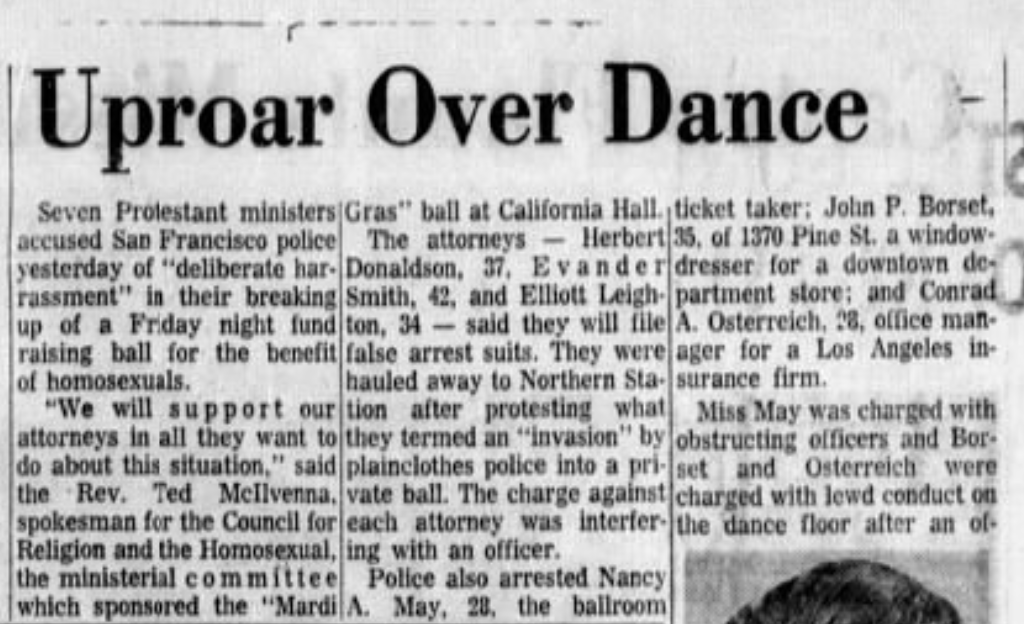
Dressing in Layers
January 1, 2025
Before Stonewall: The San Francisco 1965 New Year’s Benefit Ball
What better way to kick off a new blog on Bay Area history on New Year’s Day than a story about—- you guessed it, New Year’s in San Francisco…
Many of us know of the historic significance of the Stonewall Uprising in 1969, the 3-day rebellion that was the catalyst for the gay rights movement. But what if I told you that just 4 years earlier, there was a noteworthy event that was just as impactful to the movement to end standard police harassment practices of gay and trans folks, and it happened right here in San Francisco on New Year’s Day?
THE CRH
On January 1, 1965, hundreds of gay and lesbian folks from all over the Bay Area came to attend a benefit ball sponsored by the Council on Religion and the Homosexual (CRH), a group created by clergy from the Glide Urban Center. This coalition of sorts was inspired by Glide’s interactions with gay and trans community members on the streets of the Tenderloin. Del Martin and Phyllis Lyon, two of San Francisco's iconic gay activists, were founding board members of the CRH. The CRH’s mission was to educate the church on homosexuality and encourage the church to normalize queer people as integral members of society and our communities. You can just imagine the amount of harassment the CRH received over the years.
BEFORE SF HAD PRIDE
During this time, police were constantly raiding gay bars and clubs in the City, even shutting down well-known establishments to intimidate and discourage members of the queer community from coming together. In 1951, in a landmark case, the Supreme Court ruled in favor of Sol Stoumen, owner of the Black Cat Cafe on Montgomery Street, an important meeting spot and social space for the gay community in the 60s. George Reilly, a member of the State Board of Equalization, the agency that regulated taxes and liquor licenses, used his power to harass gay people in public places. Stoumen, who wasn’t gay himself but owned the Black Cat Cafe, took Reilley and the BOE to court after Reilly had the Black Cat Cafe’s liquor license suspended indefinitely, stating that the establishment was a disorderly house. This case was the first in history to affirm the rights of people to gather at bars and clubs, regardless of sexual preference.
Even still, many of these bars and clubs didn’t allow touching or dancing, a policy to control and regulate openly gay public gathering places and events. All the more reason why the New Year’s Ball was a private event and was so important.
PREPARING FOR THE BALL
To avoid any harassment or a complete shutdown of the ball, the CRH met several times with SFPD to talk about what the ball was about and to ensure they got the correct permits to host the event. At one point, police said that no attendees could dress in drag, however, the CRH pushed back stating this was a private event, not public, therefore SFPD could not dicate what people wore. They met a few more times with SFPD and even the sex crime department and with the exception of police wanting to know more about the personal theological philosophies of each of the clergy and whether their wives were aware of their support of the ball, the CRH left their final meeting feeling like there wouldn’t be any interruption at the ball.
From: The San Francisco Chronicle, January 3, 1965
Despite all the communication with SFPD and work committee members did ahead of the event, the police still showed up, taking pictures of guests and attempting to block the entrance to prevent guests from attending. CRH was smart, though; they brought lawyers to observe. They attempted to become the buffer between law enforcement and guests. They let SFPD know that according to state law, the event was a private party and that they could not enter without a ticket. Pastors Cecil Williams and Robert Warren Cromey tried to block the police from entering the ball but were pushed aside. Unfortunately, the lawyers were all arrested, along with the ticket taker, and charged with obstructing justice. SFPD didn’t want to be seen arresting clergy, so they instead arrested the lawyers: Herb Donaldson (who would go on to become San Francisco’s first openly gay judge), Evander Childs, and Elliot Layton.
The next day, seven clergymen who witnessed the arrest hosted a press conference. In attendance were Rev. Lewis Durham and Rev. Ted McIlvenna of the Glide Foundation, Rev. Cecil Williams, Director of Glide’s Church and Community Ministry, Rev. Fred Bird, of St. John’s Methodist Church, Rev. Charles Lewis of the North Beach Lutheran Ministry, Rev. Dr. Clarence Caldwell of the United Methodist Church and Rev. Robert Warren Cromey of the Episcopal Diocese of California. They share with the media how they planned and negotiated with police before the event and openly accuse SFPD of making broken promises, intimidation, and hostility.
A STEP TOWARD CHANGE
The American Civil Liberties Union represented the arrested lawyers. When the jury deliberated, it didn’t take long for them to come back and announce that they found the defendants not guilty. One juror said the jury would have ruled the same way even if the judge hadn’t told them what to do.
Judge Leo Friedman would go on to exonerate the SFPD officers for their tactics and harassment, an outcome that felt like nothing had changed.
However, things did change.
For the first time, a judge and jury sent a message to the general public: it is not a crime to stand up to police harassment. SFPD was completely embarrassed by the national and local attention the case brought. There were changes in police policies that allowed for the LGBTQ movement to take steps toward progress in San Francisco.
What a great milestone in San Francisco’s LGBTQ movement history, before pride parades, or LGBTQ studies, or even openly gay elected officials.

